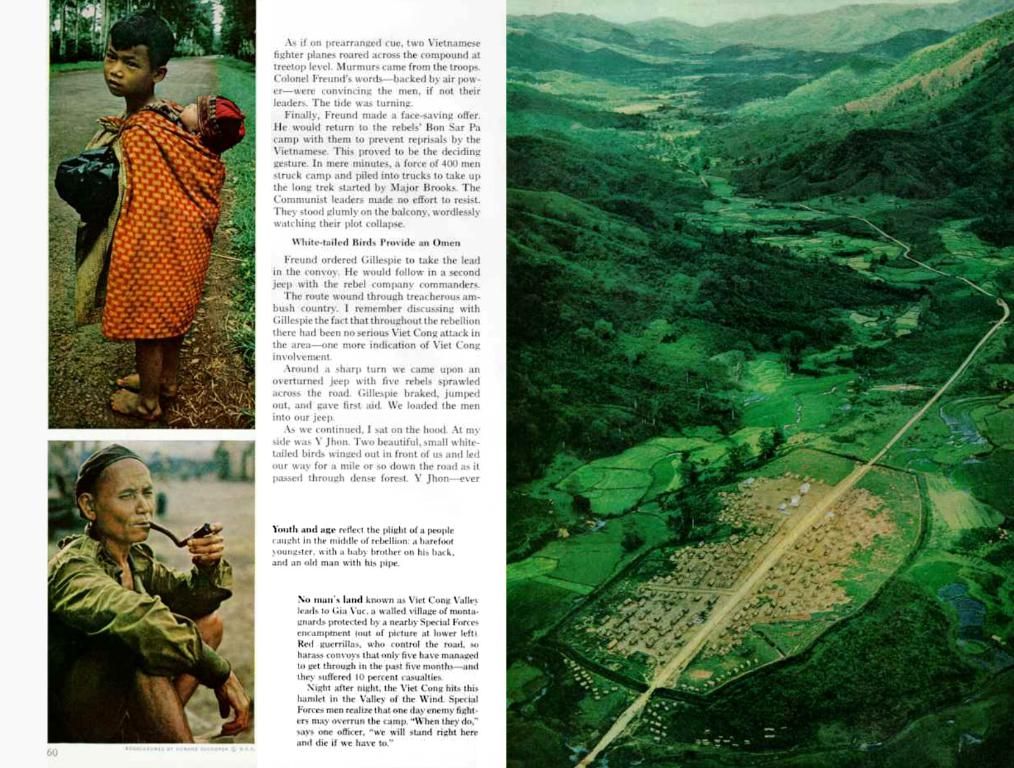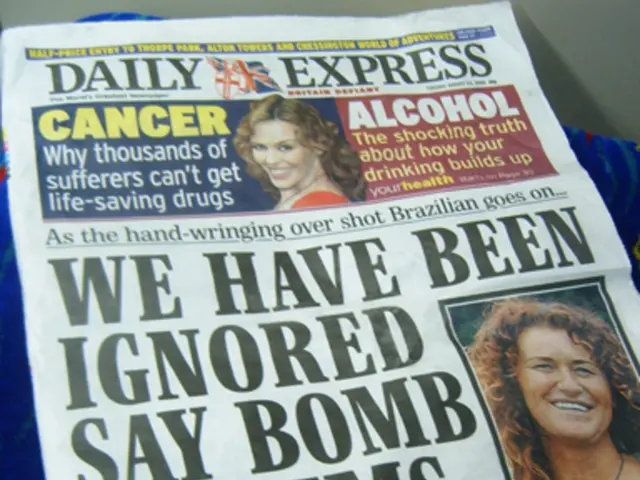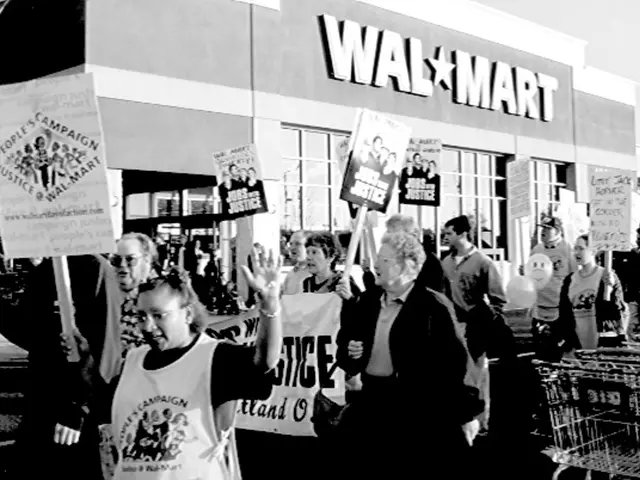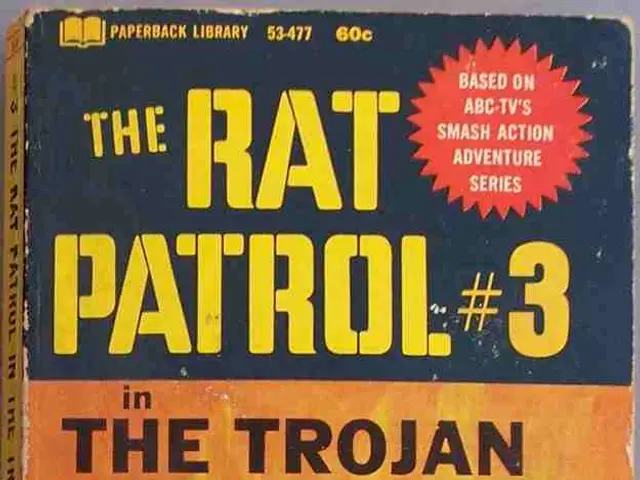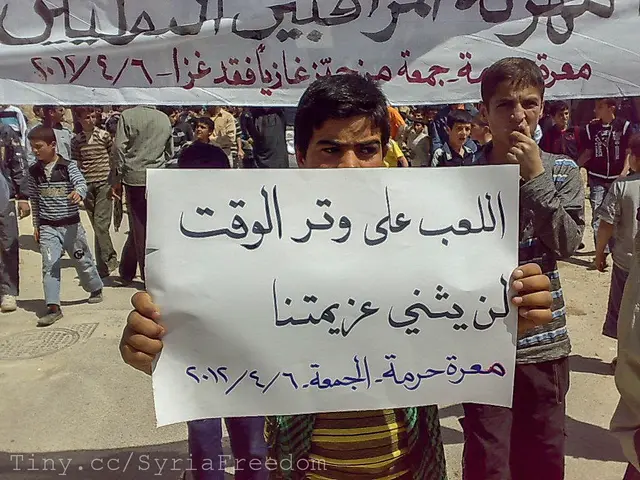Street Art Scene in Berlin: Frequently Vexing and Typically Uninspiring
Revamped Reflections on Berlin's Frescoed Frenzy
Navigating the City's Colorful, Complex Canvas
Stumbling upon Significance: Our Columnist's Times Two Tale
Berlin, 9th June 2025
In the heart of today's urban jungle, graffiti is no longer just a splash of color on a bland canvas. Yet, a pang of disappointment lurks as our columnist marvels at the loss of true provocation and thought-provoking depth in the city's walls. The stark messages of yesteryear have been replaced by an excess of seriousness, with most slogans falling flat or merely recycling Wikipedia data.
Just another 'Free Gaza' scribble, each one blending into the next, fails to stir the soul. Humor, it seems, has gone forgotten, as end-of-the-world anxiety dominates the narrative. Even shop windows in the busy streets of Mitte are somber, preaching the virtues of fairness and love for our planet in an overtly serious tone.
Berlin: Land of Two Worlds - one for tourists and the other for Berliners
Exploring this sprawling metropolis, our columnist often finds himself confronted with its two distinct realms. A corner shop aims its advertisement at the unassuming Berliner, pocketing their hard-earned cash for dubious wares. Opaque windows and guarded doors hint at securities hidden within.
Ablaze with glitzy signs, the same establishment caters to the wandering eyes of tourists. Advertising natural soaps certified under the Fairtrade label, the shop seems to be thriving. Drawn in by its high-minded slogans, customers part with their cash, eager to embrace their caring, compassionate side.
The Times They are A-Changing
As the columnist pedals through the city, remnants of a more provocative era come to mind. "No new atomic rockets until the old ones are used up" - a statement that once held the power to ignite the minds of its readers. It was a time when graffiti was a tool of defiance, a weapon forged in the fires of protest and rebellion.
Looking back, one can't help but feel a sense of nostalgia for a time when art and politics intertwined, resulting in messages that genuinely resonated.
Enrichment Data:
Graffiti in Berlin has undergone a long-term transformation from a simple form of rebellion to a complex art form used for social commentary. Originating in the 1980s, political graffiti was a mix of artistic expression and defiance during the Cold War era. With the fall of the Berlin Wall in 1989, the city's graffiti continued to evolve, becoming more sophisticated and diverse, focusing on various political and social issues. Today, many abandoned buildings serve as canvases for street artists, providing an outlet for free expression. Notable sites include Teufelsberg, a former spy station that is now an art hub. Initiatives like Urban Nation Berlin aim to elevate the status of street art and foster collaboration among artists, while promoting social commentary and critical thinking.
The lifestyle in Berlin, once teeming with rebellious provocation, now largely caters to migration towards fashion-and-beauty and education-and-self-development narratives on social media. Personal growth, as depicted in the city's graffiti, seems to have moved away from war-and-conflicts and politics, focusing more on entertainment and pop-culture.
The abandonment of humor and the rise of somber, overtly serious tones, particularly in shop windows in Mitte, reflect a shift in the city's cultural landscape. The graffiti that once celebrated resistance now blends into the general-news backdrop, with statements like "Free Gaza" losing their impact.
Yet, the city's transformation isn't uniform. Navigating Berlin's urban landscape, one encounters its dualistic reality: a world of Berliners, potentially affected by crime-and-justice, and a world of tourists seeking entertainment. Shops may promote fashionable, fair-trade products to the wandering visitors,while the same establishments peddle questionable merchandise to local residents.
Considering the evolution of graffiti in Berlin, it's evident that its role has expanded from a mere symbol of rebellion to a platform for complex art and social commentary. With landmarks like Teufelsberg serving as canvases for street artists, the city continues to be a hub for free expression. Initiatives like Urban Nation Berlin are working to elevate the status of street art, fostering collaboration among artists and promoting critical thinking.
Looking back, it's clear that Berlin's graffiti has come a long way since its provocative Cold War era messages. But while the city's canvas may be lacking in the raw defiance of yesterday, the spirit of artistic expression and social commentary lives on.
